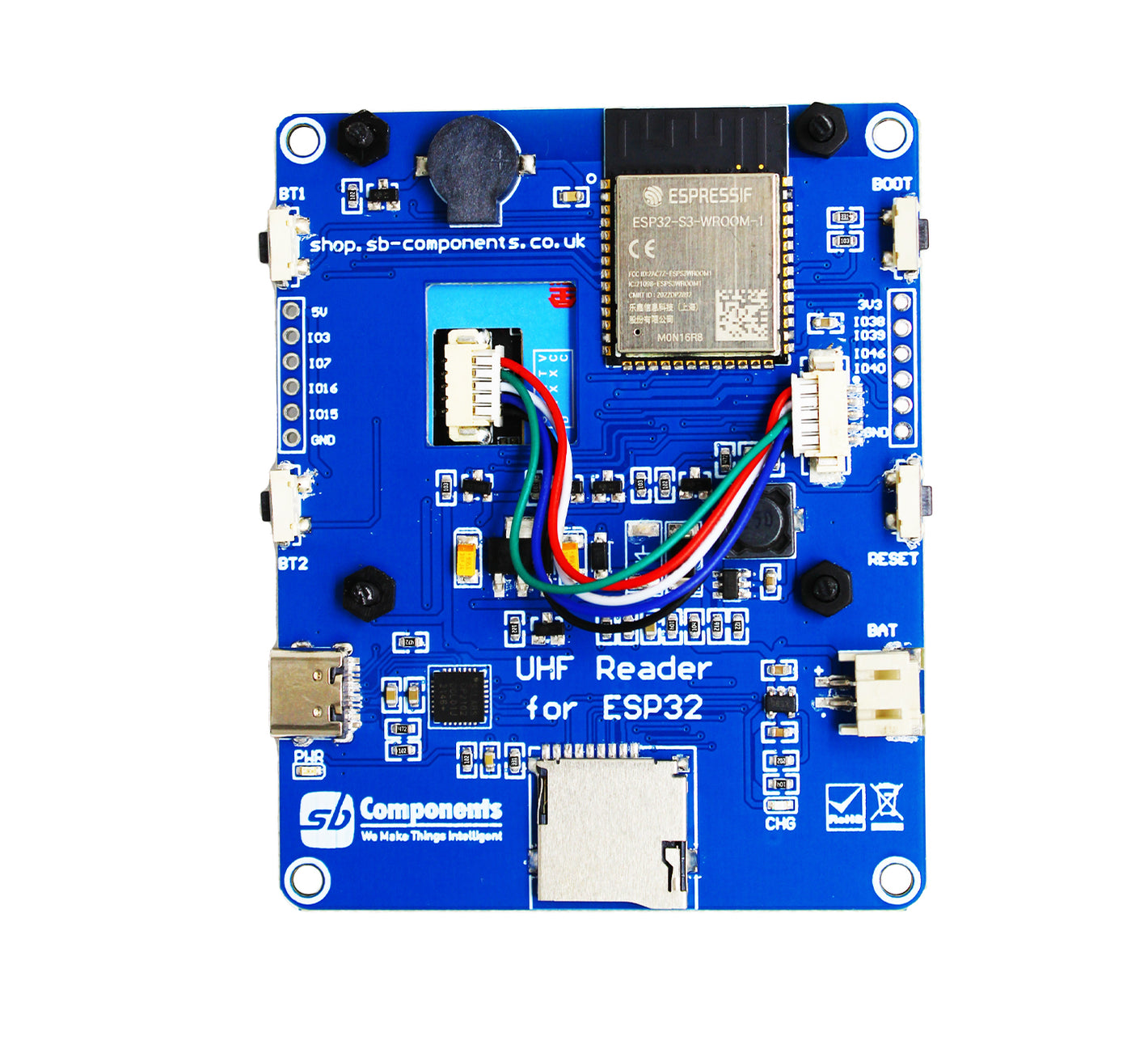The Pressure Sensor Board for Pico is the newest innovation in the line of SB Component products.
This new edition has NXP's MPXV5010DP sensor which is an integrated on-chip silicon pressure sensor that is signal-conditioned, temperature compensated and calibrated. Two axial ports are included in the Pressure Sensor Board for Pico to allow industrial-grade tubing. The sensor's maximum error rate between 0 and 85 degrees Celsius is 5.0%. It communicates with the target microcontroller over the SPI interface (CS, SCK, MISO).
Pressure Sensor Board for Pico is made to compare two pressure readings. Taking the difference in gas pressure in a flow tube with different diameters, for instance.

How it works:
P1 and P2 are two pressure ports, with P1 acting as the pressure side and P2 as the vacuum side. The measurement range for Pressure Sensor Board is 0 to 10kPa. The Differentials Pressure Sensor Board operates on positive differential pressure because the Pressure Side (P1) is greater than the Vacuum Side (P2) Before being output through the SPI interface, the signal first goes through the onboard 22-bit ADC.
Features:
The Pressure Sensor Board for Pico is powered with Raspberry Pi Pico W and comes loaded with a 1.3” square LCD, a 5-way joystick, a programmable multi-tune buzzer, and additional GPIOs.

MPXV5010DP sensor:
Modern monolithic silicon pressure sensors, the MPXV5010DP piezoresistive transducers, are especially well suited for applications requiring a microcontroller or microprocessor with A/D inputs. This transducer uses thin-film metallization, bipolar processing, and advanced micromachining techniques to provide a precise, high-level analog output signal that is proportional to the applied pressure. Industrial-grade tubing can now be accommodated in the axial port.
The key features include:
- 0% Maximum Error over 0° to 85°C
- Ideally Suited for Microprocessor or Microcontroller-Based Systems
- Durable Epoxy Unibody and Thermoplastic (PPS) Surface Mount Package
- Temperature Compensated over -40° to +125°C
- Patented Silicon Shear Stress-Strain Gauge
- Available in Differential and Gauge Configurations
- Available in Surface Mount (SMT) or Through-hole (DIP) Configurations
Raspberry Pi Pico W
Raspberry Pi Pico W is designed to be a low-cost yet flexible development platform for RP2040, with a 2.4GHz wireless interface and the following key features:
- RP2040 microcontroller with 2MB of flash memory
- Dual-core cortex M0+ at up to 133MHz
- On-board single-band 2.4GHz wireless interfaces (802.11n)
- Micro USB B port for power and data (and for reprogramming the flash)
- 40-pin 21mm×51mm 'DIP' style 1mm thick PCB with 0.1" through-hole pins also with edge castellations
- 3-pin Arm serial wire debug (SWD) port
- Simple yet highly flexible power supply architecture ◦ Various options for easily powering the unit from micro USB, external supplies, or batteries
- High quality, low cost, high availability
- Comprehensive SDK, software examples, and documentation
- 264kB multi-bank high-performance SRAM
- External Quad-SPI flash with eXecute In Place (XIP) and 16kB on-chip cache
- High-performance full-crossbar bus fabric
- On-board USB1.1 (device or host)
- 30 multi-function general purpose I/O (four can be used for ADC)
- 12-bit 500ksps analog to digital converter (ADC)
- Various digital peripherals ◦ 2 × UART, 2 × I2C, 2 × SPI, 16 × PWM channels
- 2 × programmable I/O (PIO) blocks, 8 state machines in total
Raspberry Pi Pico W uses an onboard buck-boost SMPS which is able to generate the required 3.3V (to power RP2040 and external circuitry) from a wide range of input voltages (~1.8 to 5.5V). This allows significant flexibility in powering the unit from various sources, such as a single lithium-ion cell, or three AA cells in series. Battery chargers can also be very easily integrated with the Pico W power chain.
Reprogramming the Pico W flash can be done using USB (simply drag and drop a file onto the Pico W, which appears as a mass storage device), or the standard serial wire debug (SWD) port can reset the system and load and run code without any button presses. The SWD port can also be used to interactively debug code running on the RP2040.
1.3” Square LCDThe Pressure Sensor Board for Pico comes with an onboard 1.3” Square shaped LCD with a 240 x 240 pixels resolution.
The most unusual aspect of the display is its capacity to read back the display memory across the bi-directional data lines. This fixes a significant problem with most screens, which is the need for a lot of RAM to create effects like transparency or overlapping windows.
Key features are:
- 240 x 240 pixels resolution
- IPS Display Panel
- ST7786 Driver
- SPI Interface
Buzzer
the board also has a fully programmable buzzer which is also multi-tune. It plays up to 5 different tunes and the users can set separate tunes for different actions.
5-way Joystick
The joystick has 5-way operations and is used for moving the data/display to the right, left, up, down, and select.
Additional GPIOs
These additional GPIOs are programmable by the users and can provide great ease of accessing other peripheral devices.
Application Examples
- Hospital Beds
- HVAC
- Respiratory Systems
- Process Control
- Washing Machine Water Level Measurement (Reference AN1950)
- Ideally Suited for Microprocessor or Microcontroller-Based Systems
- Appliance Liquid Level and Pressure Measurement
Resources:
Software GitHub: Getting Started Guide and Demo Example Codes.
Hardware GitHub: Hardware Design files like Schematic, Step, 3D, etc.












